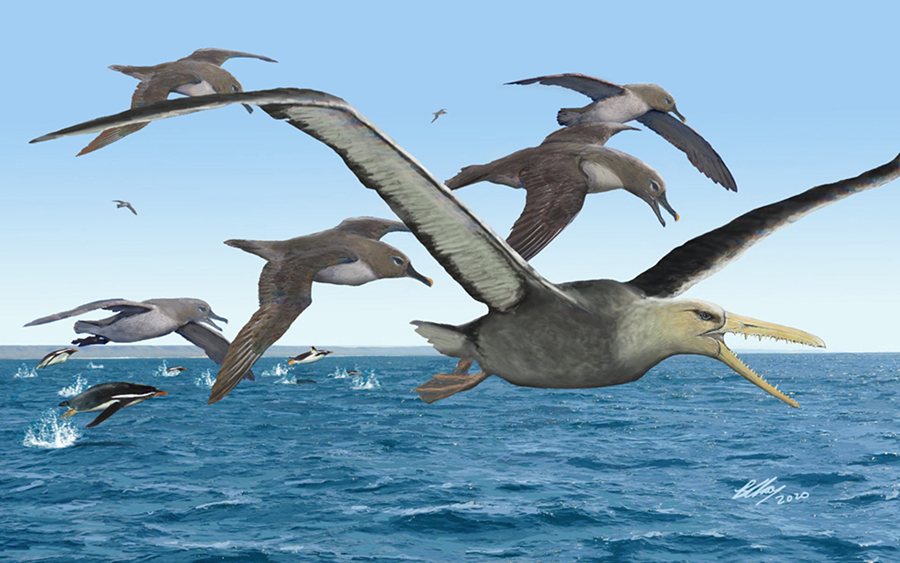New Fossils of Giant Bony-Toothed Birds Found in Antarctica

Paleontologists have described new fossils of pelagornithid birds from the middle Eocene Submeseta Formation on Seymour Island, Antarctica.
Pelagornithids are an extinct group of large flying birds with a fossil record spanning from the late Paleocene to the late Pliocene and a global distribution.
Also known as bony-toothed birds, they had bony projections, or struts, on their jaws that resemble sharp-pointed teeth, though they are not true teeth.
Called pseudoteeth, the struts helped the birds snag squid and fish from the sea as they soared for perhaps weeks at a time over much of Earth’s oceans.
Though a much smaller pelagornithid fossil dates from 62 million years ago, one of the newly-described specimens — a 50 million-year-old portion of a bird’s foot (tarsometatarsus) — shows that the larger pelagornithids arose just after life rebounded from the end-Cretaceous mass extinction 66 million years ago, when non-avian dinosaurs went extinct.
The second pelagornithid fossil from Seymour Island, part of a jaw bone, dates from about 40 million years ago.
“Our fossil discovery, with its estimate of a 5-6-m (16-20-foot) wingspan shows that birds evolved to a truly gigantic size relatively quickly after the extinction of the dinosaurs and ruled over the oceans for millions of years,” said lead author Peter Kloess, a graduate student at the University of California, Berkeley.
The fossils that Kloess and colleagues described are among many collected in the mid-1980s on Seymour Island, off the northernmost tip of the Antarctic Peninsula.
They examined the pelagornithid tarsometatarsus and realized that it came from an older geological formation than originally thought.
That meant that the fossil was about 50 million years old instead of 40 million years old. It is the largest specimen known for the entire extinct group of pelagornithids.
The other rediscovered fossil, the middle portion of the lower jaw, has parts of its pseudoteeth preserved. They would have been up to 3 cm (1 inch) tall when the bird was alive.
The approximately 12-cm (5-inch-) long preserved section of jaw came from a very large skull that would have been up to 60 cm (2 feet) long.
Using measurements of the size and spacing of those teeth and analytical comparisons to other fossils of pelagornithids, the paleontologists were able to show that this fragment came from an individual bird as big, if not bigger, than the largest known skeletons of the bony-toothed bird group.
“These Antarctic fossils demonstrate the early evolution of giant body size in this clade (by 50 million years ago),” the researchers said.
“They likely represent not only the largest flying birds of the Eocene period but also some of the largest flying birds that ever lived.”
“Furthermore, the distribution of giant-sized pelagornithid fossils across more than 10 million years of Antarctic geological deposits points to a prolonged survival of giant-sized pelagornithids within the southern seas, and their success as a pelagic predatory component of marine and coastal ecosystems alongside early penguins.”
The team’s paper was published in the journal Scientific Reports.
_____
P.A. Kloess et al. 2020. Earliest fossils of giant-sized bony-toothed birds (Aves: Pelagornithidae) from the Eocene of Seymour Island, Antarctica. Sci Rep 10, 18286; doi: 10.1038/s41598-020-75248-6
Source: www.sci-news.com/








